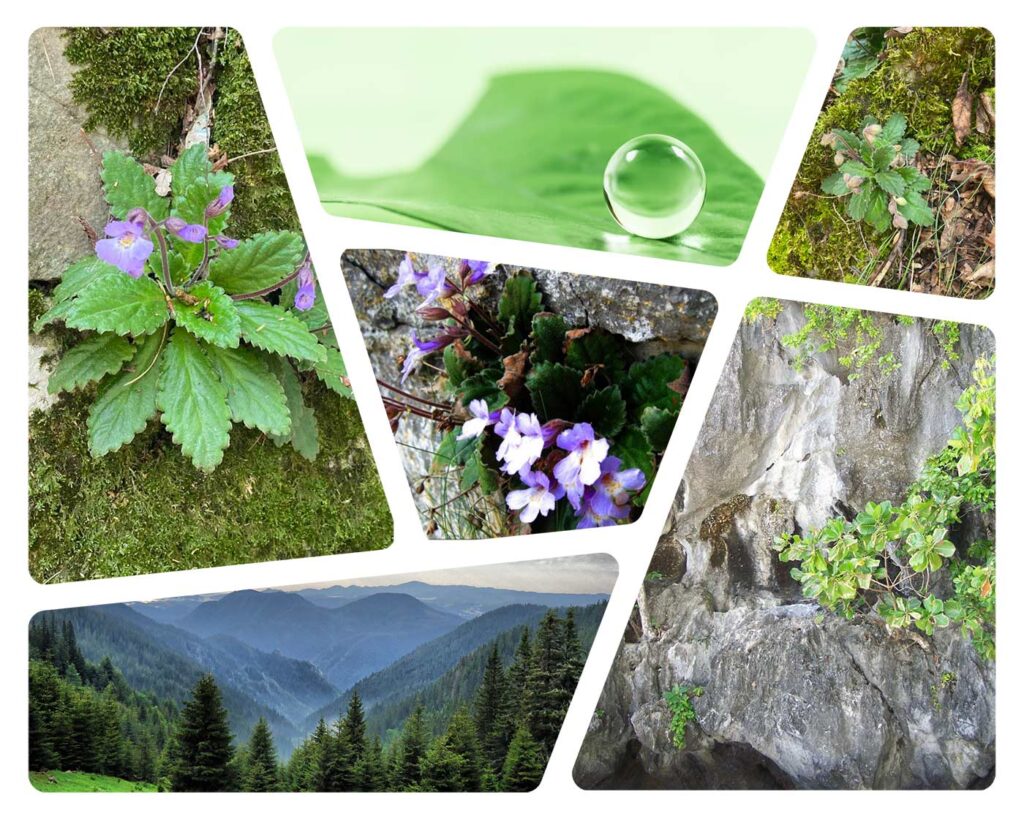The resurrecting flower, also known as Haberlea rhodopensis, is a perennial rosette plant. It is found in small quantities in Central Bulgaria – Stara Planina, Southern Bulgaria (Rhodope Mountains), rarely in northeastern Greece, and nowhere else in the world. It grows in moist, cool, shady limestone rock crevices, in the zone of beech and pine forests at elevations ranging from 150 to 1500 meters. It prefers temperatures between 15-25°C (59-77°F) during the vegetative period and lower temperatures during the dormant period. It is called a “resurrecting plant” because it can withstand complete water loss for several years and quickly recover under normal conditions. Haberlea rhodopensis plants grow very slowly, and an effective method of propagation has not been discovered yet. Propagation of Haberlea rhodopensis can be done through the use of hydroponics, using water solutions of mineral nutrients instead of soil, with an artificial medium composed of inert materials such as perlite, vermiculite, and support stones for the plants.
Haberlea rhodopensis, also known as the “resurrecting flower,” is a rare and remarkable plant that can only be found in selected regions around the world. This perennial rosette plant is found in Central Bulgaria – Stara Planina, Southern Bulgaria (Rhodope Mountains), and rarely in northeastern Greece. You won’t find this unique plant anywhere else in the world.
Haberlea rhodopensis prefers moist and cool shady limestone rock crevices found in the zone of beech and pine forests at elevations ranging from 150 to 1500 meters. Its vegetative period is characterized by a preference for temperatures between 15 and 25°C (59-77°F), while lower temperatures are preferred during the dormant period.
The characteristic that gives it the name “resurrecting flower” is its exceptional ability to withstand complete water loss for several years and quickly recover under normal conditions. This makes it a plant with remarkable adaptive mechanisms.
Plants of the species Haberlea rhodopensis grow very slowly, and their propagation is a challenge as an effective method has not yet been discovered. However, hydroponics is one of the possibilities for propagating this plant. Hydroponics uses water solutions of mineral nutrients instead of soil, with the use of an artificial medium composed of inert materials such as perlite, vermiculite, and support stones, which aid in the growth and stability of the plant.

Propagation through hydroponics: Here, we will present a detailed process for propagating Haberlea rhodopensis using hydroponic techniques. We will provide you with step-by-step instructions and the necessary materials for successful propagation of the plant.
To donate and join us, please visit our donation page or contact us through the contact form you will find on the page. Your donation is valuable and will be used to fund our research in the field of Haberlea rhodopensis and its applications in science and medicine.
We believe that through our collaboration, we can change the future and discover new active compounds and substances in Haberlea rhodopensis that can aid scientific research in the fight against cancer and other diseases.
Thank you for your interest and support in our efforts. Together, we can achieve exceptional results and make the world a better place through scientific discoveries and innovations.

